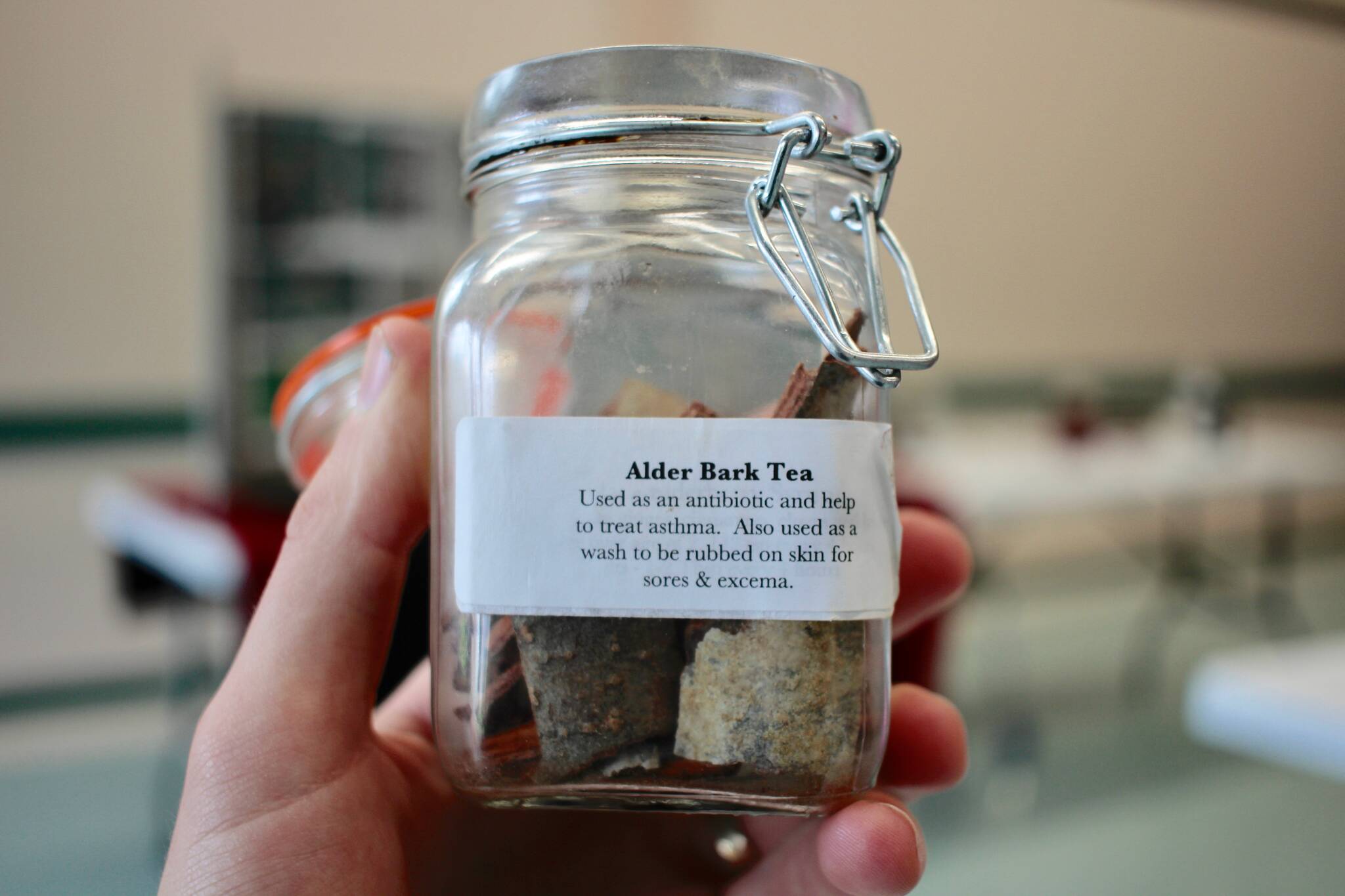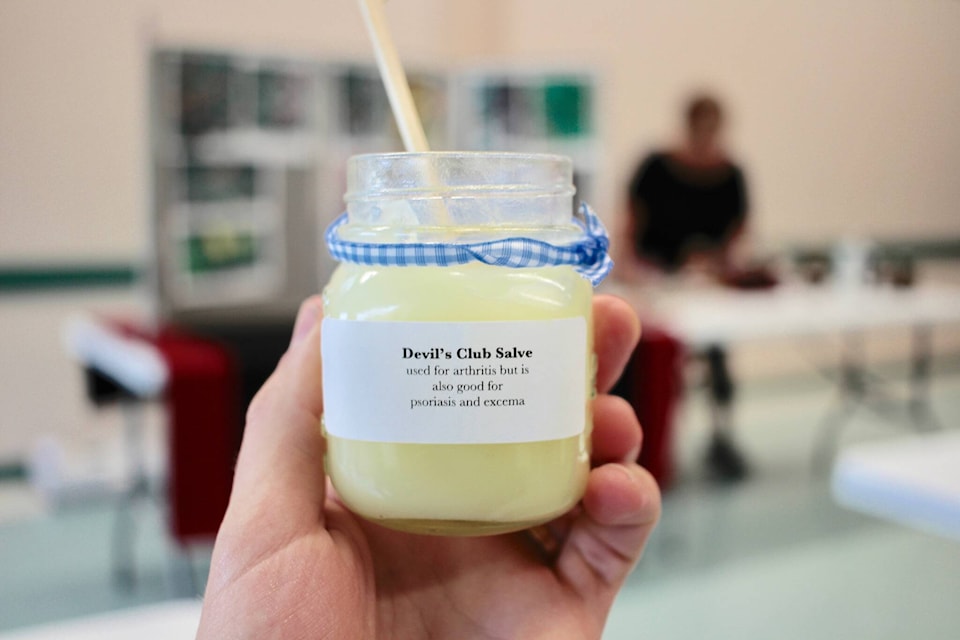A group of people gathered to learn about First Nations plants and medicinals from We Wai Kai Elder Úmagalis (June Johnson) on Tuesday afternoon as part of Volunteer Campbell River’s “Q̓aq̓uƛ̓aʔinē sa Noqe – Hearts Learning” Project.
Johnson first learned about medicinal plants from her mother.
“I’ve been doing medicine for probably 30 years and I learned from my mom. We didn’t have a car ferry, and when we got hurt we needed to deal with what was over there,” she said. “She didn’t go to residential, and she stayed home to learn the culture. Her role was going to be in the community. All of her life she looked after people on the Reserve… a lot of the Elders and stuff. That was her role. Everybody had a role in the Bighouse. We had fishers, hunters, medicine women.”
“A lot of that was handed to them. I was really thankful that my mom taught me some of it,” Johnson said.
For the presentation, Johnson went through and described the medical uses of 18 different plants, as well as gave out samples of each plant to help with identification. Preparations of these plants ranged from teas to salves, as well as some which could be eaten directly.
Though they are used for medicinal purposes, many of the plants can also be used as food. Johnson remembered picking and peeling salmon berry shoots, which though contain a lot of vitamin C are also quite delicious.
”That was our candy when I was growing up,” she said. “My mom would get a bowl of sugar and we’d dip our salmon berry sprouts in it. It had a lot of vitamins.”
All of the plant medicines outlined in the workshop are available in the area around Campbell River. However, many of them are ready in the spring. Johnson did stress making sure that you can positively identify any plants you use, avoiding picking in previous logging or industrial sites, as well as ensuring cultural rights of people are respected.
Ultimately, Johnson would like to pass this information on to the younger generation, following centuries of tradition.
”We used a lot of the medicines since time immemorial,” she said. “It was passed down through the generations because we didn’t have a writing system back then. We were taught and then just passed it down from generation to generation. Everybody had a role. Once I learned medicine I could pass it down to the children. I’m trying to get the younger people to learn about the traditional medicines because I’m not going to be here forever and I really want somebody to take over.”
If the reception is any indication, Johnson won’t have trouble passing on her knowledge to the next generation.
“I’m really impressed with all of the people who want to learn about our medicinals,” she said. “It’s really important that we share what we know, and things that we’ve done in this community. I’m really happy that you’re all willing to learn some of it.”
Volunteer Campbell River will be hosting more events in this series. Click here for more information.

